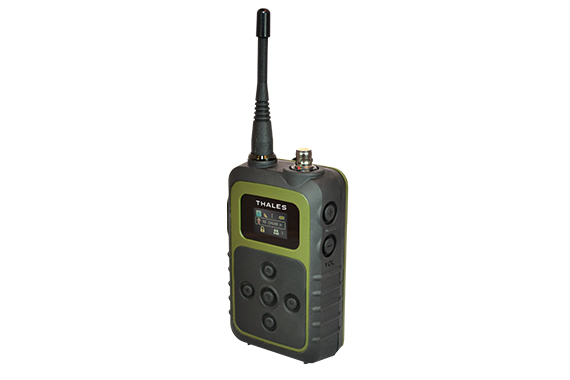Thales has told asianmilitaryreview.com that it is ready to deliver its SquadNet radio to customers, following the commencement of production in the late summer of 2016.
Thales launched its Ultra High Frequency (UHF: 865-880 Megahertz) radio during the 2015 Defence Security Equipment International exhibition held in London in September of that year. Speaking to AMR in late-November 2016, Timothy Coley, the SquadNet product manager, told the publication that the firm was positioning the radio to compete with legacy squad-level radios such as Leonardo/Selex’s Personal Role Radio (PRR) family, and is aiming the SquadNet at customers: “who are looking at an entry level radio, that might be using commercial radios for squad communications, or which might use no radios at this tactical level at all.”
Primarily designed for dismounted voice communications, with the capability to also handle some data, such as still imagery at rates of “kilobits-per-second,” Mr. Coley adds, the radio typically has a point-to-point range of up to two kilometres (1.2 miles) across open ground, although this can be extended via the radio’s mobile ad hoc networking capability which allows it to transmit across up to three hops; all using a Thales proprietary waveform. Mr. Coley continues that the firm placed a significant emphasis on weight reduction, compared to legacy squad radios, during the design process, resulting in a transceiver (including the removable battery) tipping the scales at below 250 grams (0.6 pounds), while providing up to 28 hours of battery life. Although the firm has yet to secure any customers, as of late November 2016, Mr. Coley disclosed to asianmilitaryreview.com that the firm “had made a number of demonstrations to various customers.”
Other design features built into the radio include a Global Positioning System receiver which provides a read-out of position location information on the radio display. This location is automatically shared with peers, and can be transmitted via the radio’s built-in Bluetooth transmitter to an Android application to provide a Blue Force Tracking capability. Furthermore, the Android software application enables the radio to use the Android device’s connection to IP (Internet Protocol) networks such as 3G, LTE or Wi-Fi, to create a web-bridge between radio users.













